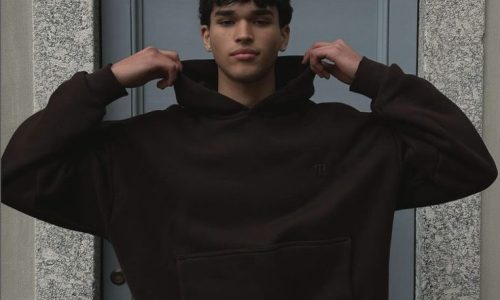
Rewriting the Rules: Gen Z Fashion Revolutions in 2025
Introduction
In 2025, Generation Z stands at the epicenter of a fashion revolution. With a bold spirit and a digital-first mindset, this cohort is dismantling outdated norms and pioneering an era defined by individuality, inclusivity, and innovation. From rejecting traditional beauty standards to embracing fluid gender expressions, Gen Z is not just following trends—they’re making them. “Rewriting the Rules: Gen Z Fashion Revolutions in 2025” explores this seismic shift in the fashion world, examining how young tastemakers are reshaping aesthetics, rethinking sustainability, and redefining the very purpose of what we wear.
The Rise of Individualism and Self-Expression
One of the defining characteristics of Gen Z fashion is the celebration of self-expression. Unlike previous generations that leaned into uniformity or seasonal rules, today’s youth embrace clothes as a canvas for identity. Whether through bold color combinations, experimental silhouettes, or vintage remixes, every outfit becomes a unique statement.
This movement stems from a broader cultural shift where authenticity is prized over conformity. Social media platforms like TikTok and Instagram have empowered individuals to showcase their style without gatekeepers, enabling micro-trends to flourish and niche communities to thrive. The result is a democratized fashion landscape where diversity in expression is not only accepted but celebrated.
Gender Fluidity and the End of Binary Dressing
Gen Z is leading the charge in challenging gender norms, especially when it comes to clothing. In 2025, the lines between men’s and women’s fashion have blurred significantly. Unisex collections are becoming the norm, with designers prioritizing versatility and comfort over rigid gender segmentation.
This shift has been influenced by an evolving understanding of identity and the desire to create inclusive spaces. Brands that fail to acknowledge this fluidity risk becoming obsolete. Young consumers are demanding clothes that reflect their lived experiences—not outdated categories. From skirts on runways worn by male models to oversized tailoring adopted across all identities, fashion is becoming a tool for liberation.
Sustainable Fashion Becomes a Necessity, Not a Niche
For Gen Z, environmental responsibility is non-negotiable. The climate crisis has pushed sustainability from a fringe concern to a core value in fashion. In 2025, young consumers are making informed choices about their wardrobes, favoring eco-friendly materials, ethical production practices, and circular economy models.
Thrift shopping, clothing swaps, and upcycling have surged in popularity. Beyond being environmentally conscious, these practices allow for creativity and uniqueness—key drivers in Gen Z’s fashion ethos. Brands are also being held accountable, with transparent supply chains and sustainable certifications becoming essential for gaining consumer trust. Fashion for this generation is as much about the planet as it is about style.
Digital Fashion and Virtual Style Identities
In an increasingly immersive digital world, fashion has transcended the physical. Gen Z is embracing digital garments, NFTs, and virtual fitting rooms as new ways to experience and express style. Online avatars, gaming skins, and metaverse fashion shows are not gimmicks—they are essential elements of the 2025 fashion ecosystem.
These innovations allow users to experiment without waste, offering endless opportunities to curate identities across platforms. Virtual fashion also democratizes access, enabling people from different backgrounds to participate in high fashion in ways previously unimaginable. The line between the digital and physical wardrobes continues to blur, heralding a future where virtual self-expression is just as important as the real-world look.
The Revival of Y2K and the Remix Culture
Gen Z has an uncanny ability to take the old and make it new. The resurgence of Y2K aesthetics—think low-rise jeans, butterfly clips, and bedazzled accessories—illustrates this generation’s love for remixing past styles. But this isn’t just nostalgia; it’s a recontextualization of history through a contemporary lens.
Vintage shopping and second-hand marketplaces are booming, not only due to sustainability but also because they offer access to unique items that can’t be found in mainstream retail. This reappropriation of past trends is done with a twist—pairing retro pieces with futuristic elements or layering styles in unexpected ways. It’s a form of storytelling where clothes connect the past, present, and future.
Fashion Activism and Political Expression
More than any previous generation, Gen Z views fashion as a platform for advocacy. In 2025, clothing often serves as a visible declaration of values—whether it’s support for climate justice, LGBTQ+ rights, or racial equality. Slogans, symbols, and motifs become rallying cries woven into the fabric of everyday wear.
This trend goes beyond graphic tees. Entire collections are designed around social justice themes, with proceeds supporting related causes. Streetwear and haute couture alike are being infused with messages meant to provoke thought and inspire action. For Gen Z, what you wear isn’t just about style—it’s a statement of where you stand.
The Influence of Global Subcultures
The digital age has made global subcultures more accessible than ever, and Gen Z is drawing inspiration from diverse sources around the world. From Japanese street fashion to Nigerian Afrofuturism, international styles are shaping the wardrobe choices of today’s youth.
This cultural cross-pollination has led to an explosion of hybrid aesthetics. It’s common to see an outfit that merges Scandinavian minimalism with South Korean pop flair. These eclectic influences reflect a generation that values inclusivity, interconnectedness, and the breaking down of cultural silos. In fashion, this global perspective fosters creativity and unity.
The Return of Craftsmanship and DIY Culture
Despite their digital roots, Gen Z has sparked a renaissance in hands-on creation. Knitting, crochet, embroidery, and textile arts are seeing a revival, fueled by a desire for authenticity and slow fashion. DIY culture is thriving, with platforms like TikTok showcasing handmade creations that blend skill with self-expression.
This movement is not just about making things—it’s about reclaiming agency in a mass-produced world. Customized garments, hand-painted denim, and patchworked outerwear are becoming badges of individuality. As automation accelerates in other sectors, the value of the human touch in fashion is rising, driven by a generation that craves meaning in what they wear.
The Future of Retail: Experience Over Transaction
Shopping is no longer just about purchasing clothes. For Gen Z, retail must offer connection, immersion, and inspiration. In 2025, successful fashion stores are those that double as social hubs, pop-up galleries, and augmented reality experiences.
Brands are investing in storytelling-driven retail environments that encourage discovery and engagement. Interactive mirrors, customizable fitting sessions, and in-store events are becoming standard. Online platforms, too, are evolving to offer immersive shopping experiences with 3D product previews and virtual stylists. The future of fashion retail is experiential, not transactional.
Conclusion
The Gen Z fashion revolution is not a fleeting trend—it’s a fundamental reimagining of how we view, create, and consume clothing. In 2025, this generation is setting the tone for an industry in flux, blending technology with tradition, activism with aesthetics, and individuality with community. Their fearless approach to style is not only transforming fashion—it’s reshaping culture at large. As we move forward, one thing is clear: the rules have changed, and Gen Z is writing the new playbook.



